All issues

Volume 10 (1981)
- Issue 6 Pages 905-
- Issue 5 Pages 859-
- Issue 4 Pages 803-
- Issue 3 Pages 747-
- Issue 2 Pages 363-
- Issue 1 Pages 1-
Volume 10, Issue 2
Displaying 101-111 of 111 articles from this issue
-
Takuji WASHIZU1981 Volume 10 Issue 2 Pages 718-721
Published: April 15, 1981
Released on J-STAGE: October 07, 2011
JOURNAL FREE ACCESSIn this paper, the artificial heart is limited only total biventricular artificial heart and long term left ventricular assist device, so called, permanent assist device.
The most important factor in the material problems is blood compatibity of the surface. the smooth surface made from sequenced poly urethane is fairly good, however anticoagulant therapy is also necessary. Texturized surface coated with protein and biolized by glutaraldehyde is called biolized smooth surface and is documented good material in long term experiment.
The endurance of materials for flex life is the second important factor, however, which is correlated to the design of the pump. Physiological good result and long term endurance are achieved using the human dura mater valve.View full abstractDownload PDF (4590K) -
[in Japanese]1981 Volume 10 Issue 2 Pages 722-723
Published: April 15, 1981
Released on J-STAGE: October 07, 2011
JOURNAL FREE ACCESSDownload PDF (290K) -
Masayoshi YOKOYAMA1981 Volume 10 Issue 2 Pages 724-726
Published: April 15, 1981
Released on J-STAGE: October 07, 2011
JOURNAL FREE ACCESSThe catheter of cardiac pacemaker could not be removed because of its strong fixation with the endocardial surface. In thosecases, another lead is inserted into the right ventricle. In our clinic 13 patients have two leads in the right ventricle. We would like to ask how many leads could be preservedin the right ventricle without any complications.
We also want to ask the reliability of the polyurethane and perolytcarbone which are employed recently in the pacemaker and artificial valve.View full abstractDownload PDF (4670K) -
T. TERAMATSU1981 Volume 10 Issue 2 Pages 727-728
Published: April 15, 1981
Released on J-STAGE: October 07, 2011
JOURNAL FREE ACCESSThe auther reported “Dia-Lung” which is combined artificial kidney and lung, as shown in Fig. 1 and discussed on the possibility of the clinical application for acute and chronic dyspnea.View full abstractDownload PDF (158K) -
[in Japanese]1981 Volume 10 Issue 2 Pages 729
Published: April 15, 1981
Released on J-STAGE: October 07, 2011
JOURNAL FREE ACCESSDownload PDF (182K) -
Teruo MIYATA1981 Volume 10 Issue 2 Pages 730-731
Published: April 15, 1981
Released on J-STAGE: October 07, 2011
JOURNAL FREE ACCESSCollagen is a tissue culture substrate superior to glass and plastics, and possesses the unique interaction characteristics with cells. Fibronectin is supposed to be a substance important for cell adhesion to collagen. Collagen fibril (quarternary collagen structure) has the specific interaction with cells to control the migration, alignment and differentiation of cellls. Collagens, purified from bone and tooth induce bone formation when implanted subcutaneously. Collagen fibril lattices constructed with recipient epidermal cells are well integrated into skins of experimental animals. Collagen as a biomaterial having specific interaction properties against cells would be more important as hybrid artificial organs are developed.View full abstractDownload PDF (289K) -
Akio YAMANAKA1981 Volume 10 Issue 2 Pages 732-733
Published: April 15, 1981
Released on J-STAGE: October 07, 2011
JOURNAL FREE ACCESSThe problems to get new intraocular lens (IOL) from the point of view of materials are discussed.
For the suturing materials, which fixate IOL, slenderness (φ 10-0), good tensile and Knot strength, no biodegradation and good biocompatibility, are requested.
The necessity to get mechanically, chemically and biochemically strong surface with biocompatibility in IOL materials is requested also. There is great necessity for the development of simulating accelaration test for the evalution of the new materials.
Development of ideal sterilization method is important instead of currently used method like NaOH system, EOG system or others.View full abstractDownload PDF (236K) -
Aizo YAMAUCHI1981 Volume 10 Issue 2 Pages 734-735
Published: April 15, 1981
Released on J-STAGE: October 07, 2011
JOURNAL FREE ACCESSIn answer to Dr. YAMANAKA's questions
From a technological point of view, prroperties for fibers to fix IOL must be specified. Secondly, to estimate the long-term stability in vivo appropriate testing method, preferably in vitro, should be established. Polymer chemist's experience in practice recomends polyester fibers.
In application to intraocular stability in vivo. In some cases, hydrophilized surface may be severely contaminated with humor components, and transparency lowered by such adsorptive coating.
IOL can be sterilized effectively by gammaray irradiation. When one persist on boiling sterilization, use to the more heatresistant plastics may be another solution.View full abstractDownload PDF (286K) -
Noriya AKAMATSU1981 Volume 10 Issue 2 Pages 736-739
Published: April 15, 1981
Released on J-STAGE: October 07, 2011
JOURNAL FREE ACCESSThere are problems concerning artificial bone and joint as follows: how to fix between bonw and prosthesis and metarials and structure in artificial bone and joint.
Some people has such opinion as bone cement made of methylmethacrylate would be harmful for human body. Then improved bone cement without toxication or cementless artificial joint would be expected.
Al2O3 ceramics has recently been developed as new meterial instead of metal or plastics.
Ceramics is less stronger in resistance for heavy load than metals although it is much better in wear than the others.View full abstractDownload PDF (7111K) -
[in Japanese], [in Japanese]1981 Volume 10 Issue 2 Pages 740-742
Published: April 15, 1981
Released on J-STAGE: October 07, 2011
JOURNAL FREE ACCESSDownload PDF (438K) -
[in Japanese]1981 Volume 10 Issue 2 Pages 743
Published: April 15, 1981
Released on J-STAGE: October 07, 2011
JOURNAL FREE ACCESSDownload PDF (124K)